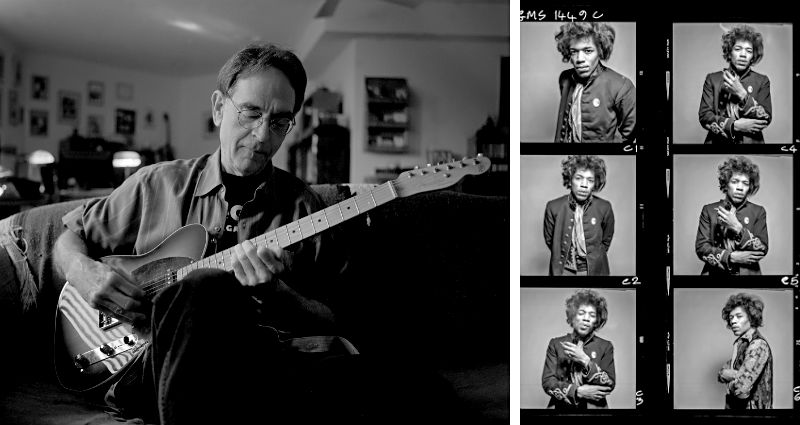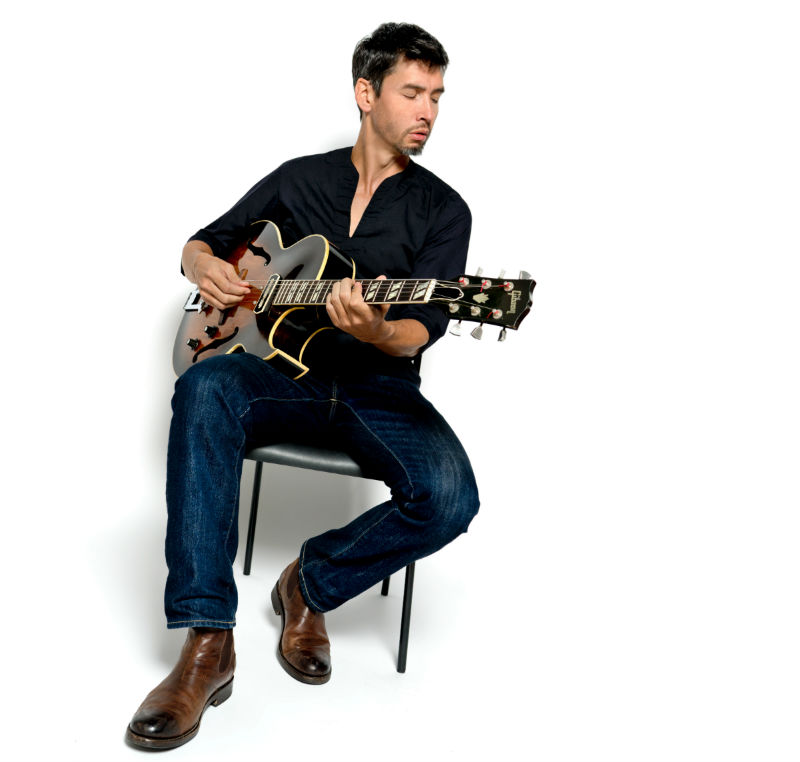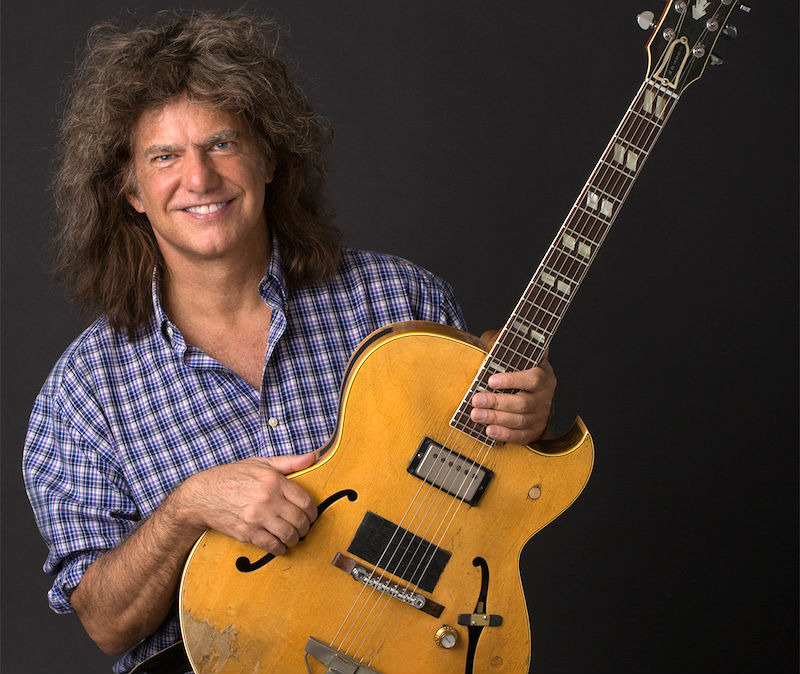Jimi Hendrix's Experience: Jas Obrecht's "Stone Free" goes deep into the guitar great's transformative 10 months in London

This story originally ran February 11, 2019.
The life of guitar legend Jimi Hendrix has been explored in numerous biographies and documentaries, so you could be forgiven for being skeptical as to why the world needs another book about the man widely considered to be the greatest guitarist of all time and a major influence on the sound of rock music. Jas Obrecht's new offering on the subject, however, takes a much closer look at a specific period in the life of Hendrix.
Stone Free: Jimi Hendrix in London, September 1966-June 1967 is a detailed, day by day look into the guitar great's arrival in England and his rapid rise from obscurity to fame. Obrecht's book puts into perspective just how quickly and completely Hendrix revolutionized pop music. The supporting cast is a who's who of British rock icons including The Beatles, The Rolling Stones, The Who, The Animals, and many others. I had the pleasure of sitting down for an interview with the author, who has written nearly 200 cover stories for Guitar Player and other music magazines as well as a number of books on blues and rock.
Obrecht will be reading from his new book on Thursday, February 14, 7 pm, at Literati Bookstore in Ann Arbor. Below is the conversation we had, slightly edited for flow.
Jazz Is: Guitarist Elden Kelly and The Outrospectives play “Dancing Light: Music of Gregg Hill” at Blue LLama

In college, I had a professor who used to enjoy asking the students in jazz history class to define jazz. He would say, “What is jazz?” and then sit back and listen to us try to answer this seemingly basic question. We know it when we hear it, but since we can’t quite put our fingers on what makes something “jazz,” we use other words like bebop, post-bop, modern, avant-garde, free, and fusion to help us out. Usually, I deplore circular reasoning, but when it comes to impossible questions, sometimes the answer is in the question itself. Jazz is what jazz musicians do. What’s a jazz musician? A person who plays jazz is a jazz musician. What’s jazz again?
On May 9 I attended the CD release show for The Outrospectives' new record, Dancing Light: Music of Gregg Hill, at Ann Arbor’s Blue LLama Jazz Club. Guitarist Elden Kelly assembled this band to play compositions by Gregg Hill. Elden arranged the music for a specific quintet of gifted musicians, and he worked with Hill to transcribe the music over the course of the past six years. What made this concert exciting were the ways in which this group and the music it played were both firmly rooted in jazz traditions, while simultaneously breaking new ground and bringing in non-jazz elements (or at least elements that are not traditionally associated with jazz).
The group itself is almost a traditional quintet, but with some caveats.
Where Many Rivers Meet: Debashish Bhattacharya explored Indian classical music on Hawaiian lap-steel guitar at the jazz club Blue LLama

Indian classical music is not jazz, but both traditions have some commonalities, particularly improvisation, which is a critical and highly developed skill in both genres. Those commonalities -- and tons of skill -- were on display May 2 during Debashish Bhattacharya's performance at the new Blue LLama jazz club in Ann Arbor.
Indian classical music and jazz traditions are often transmitted orally. Musicians are held to a high standard of excellence. There is a tension between tradition and innovation that helps to ground the music without causing it to sound stale and boring. And in the case of Bhattacharya, who has brought the Hawaiian lap steel into the world of Indian classical music, there is a willingness to explore music beyond the traditional boundaries of style or genre.
I took my seat at the back of the club about 20 minutes before show time. My server brought me a small, single-bite portion of palak chaat, a salad of crispy spinach, yogurt, and curry created by Chef Louis that had been inspired by the evening's music. Blue LLama is very serious about its mission of combining “the love of food with the love of music” (and why there are two capital LLs in the club's name). The food is delicious and the venue has been designed from the ground up for incredible sound and vibe. It's definitely the classiest place in town to see live music.
Where It Starts: A conversation with Miles Okazaki about Thelonious Monk

Miles Okazaki is among the greatest living improvisers on the guitar. An assistant professor of jazz guitar at the University of Michigan, he has his own deep and well-conceived ideas about rhythm, harmony, and melody. A few weeks ago I had the opportunity to sit down with Okazaki to discuss his latest release, a massive six-volume solo-guitar project entitled Work in which he recorded every song by Thelonious Monk -- 70 in total -- with no effects, overdubs, key or time changes.
It’s difficult to overstate the importance of Monk in American music. His approach to harmony, melody, and especially rhythm has influenced virtually every musician who has followed him. It was a privilege to be able to get into the weeds with Okazaki on the topic of Monk’s music.
Our conversation is below, with some edits for flow.
Full Range: Pat Metheny explored 40 years of music at his Hill Auditorium concert

World-renowned guitarist and composer Pat Metheny has written a lot of music over a 40-plus-year career, and with his current tour he is taking the time to dig deeper into some of the older material. Rather than release an album and tour new tunes, he decided to put a small group of consummate musicians together who are capable of playing a wide variety of his music from across the decades. But don’t call this a retrospective. Instead, it’s more like research. The players are digging into the old tunes and finding new pathways to navigate. Metheny has clearly chosen his bandmates to be able to find fresh ways to improvise over his material.
Metheny’s UMS-sponsored performance on October 10 at Ann Arbor’s Hill Auditorium felt surprisingly intimate considering there were 4,000 people in attendance. The stage was set up almost like a rehearsal space, with the supporting musicians arranged in a tight circle around Metheny. The band played loose, keeping arrangements minimal and playing off of each other throughout the set. Metheny came out first, performing a beautiful solo piece on the 42-string Pikasso guitar, built for him by luthier Linda Manzer. The guitar itself is a work of art with a huge range, and Metheny used the whole instrument, fretting deep bass notes with his left hand while improvising beautiful harp-like melodies on the drone strings. Following that first piece, the rest of the band took the stage, and the energy kicked up and stayed up for the rest of the night.


































